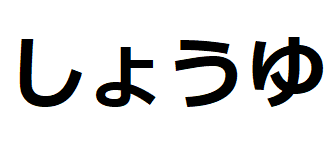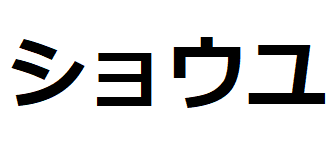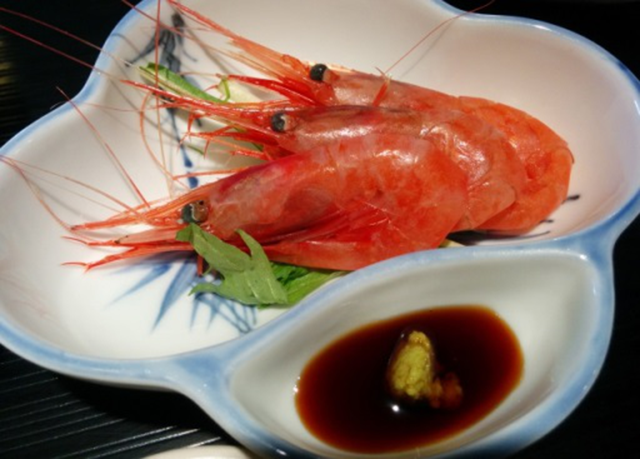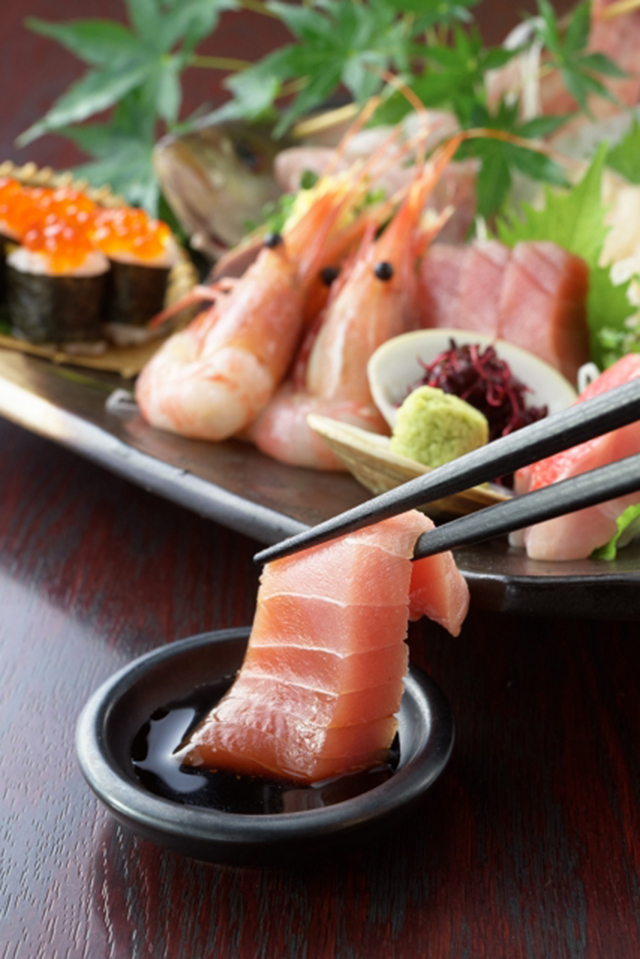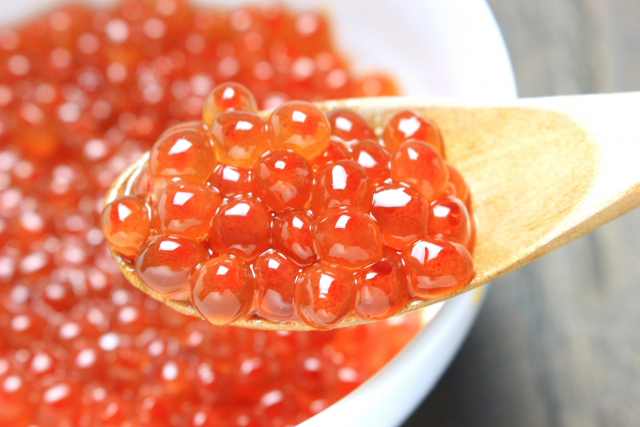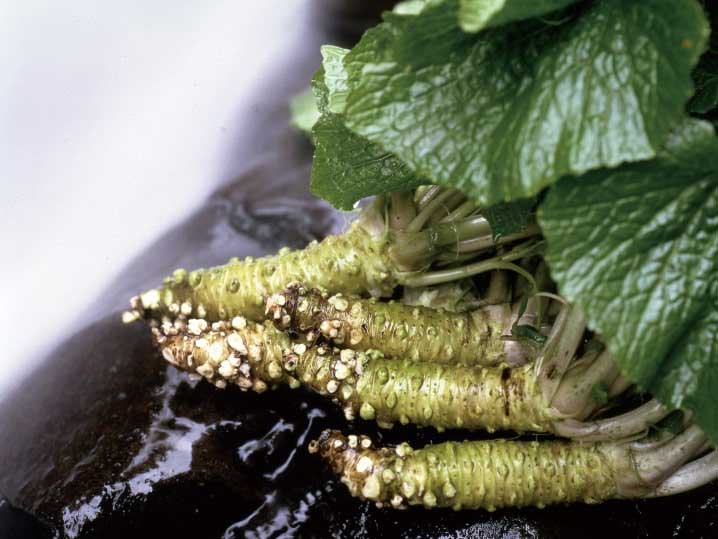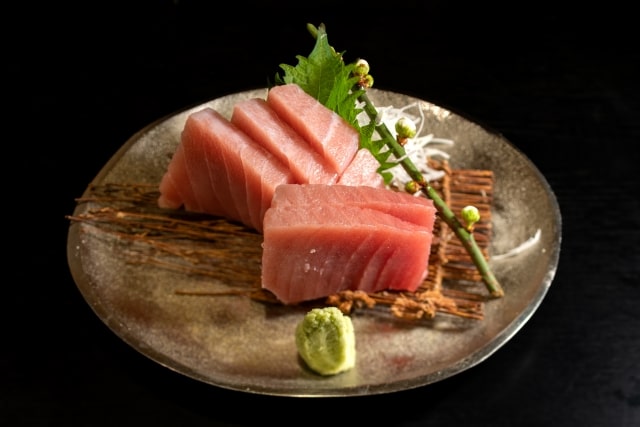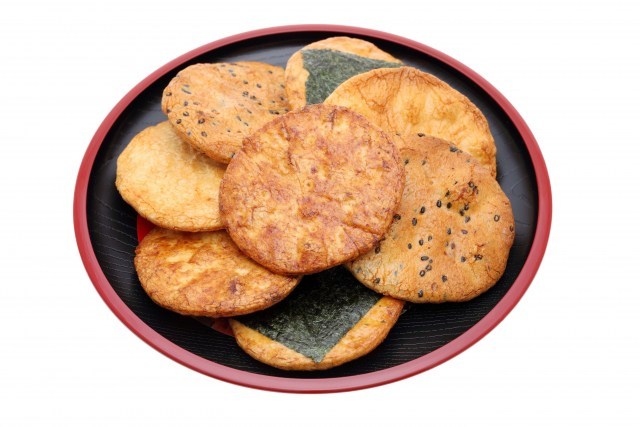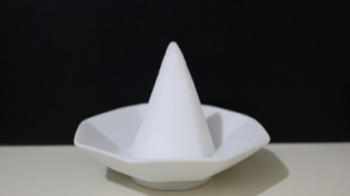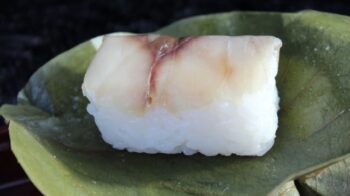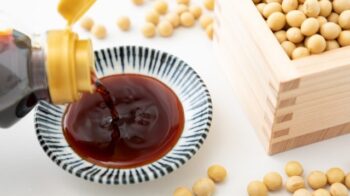Soy Sauce
Welcome to the world of Soy sauce which is called Shoyu in Japan.
Probably, the name soon reminds you of Sushi or Sashimi.
Let’s learn about them.
Below is the contents of this page.
1. with Sashimi
1) bacteria-killing action
Firstly, with Sashimi.
Among many characteristics, we can never forget its bacteria-killing action.
It can sterilise bad bacteria by the action of salt, lactic acid and alcohol.
This is one of the reasons why we dip Sashimi or Sushi in a small dish containing soy sauce and Wasabi horseradish, or grated ginger.
Incidentally, Wasabi and grated ginger also cause strong bactericidal action.
For the same reason, we pickle salmon eggs called “Ikura” in soy sauce.
How to eat Sashimi with Wasabi
- Pour a moderate amount of soy sauce on the small plate.
Dip the Sashimi in it. Never pour directly on it. - Put a moderate amount of Wasabi on the sashimi.
In order to enjoy the flavours of wasabi, it’s advisable not to dissolve it in the plate. - Pick up the small plate and hold it in your hand in order to avoid spilling the liquid.
It is considered poor manners to use your hand like a saucer.
(Although I myself sometimes behave like this.)
- Sashimi tastes better if you eat it from the light taste to the rich taste.
That is, in the order of white fish, shellfish, and lean fish.
2) Smell wrapping action
In addition, it can eliminate the bad odor of fish or meat by wrapping them.
To tell the truth, this was the starting point of the modern Koikuchi.
In addition, for this very reason, a new type of Koikuchi was invented in Edo where people consumed a quantity of fish every day, including Sashimi.
2. with Senbei
Amino-carbonyl reaction
Next with Senbei.
Actually, soy sauce sends a very appetising savour when heated with sugar and Senbei (rice cracker) makes full use of this reaction.
It’s called the “amino-carbonyl reaction”.
Furthermore, it causes the aroma which makes grilled rice balls (Yaki-onigiri) or roasted corn (Yaki-tomorokoishi) more appetising.
3. with Noodles
Finally, with noodles, such as Udon, Soba and Ramen.
As soy sauce is liquid, it is convenient to make soup. By using different types of soy sauce, we can easily make soups different in flavour, saltness or colour.
Thanks to soy sauce, noodles have become more accessible and it is one of the greatest reasons why Japanese love noodles so much.
By the way, Udon, Soba, Ramen are all served both hot and cold. For cold noodles, Dashi shoyu made by simmering and straining the ingredients such as kelp (kombu) or fish flakes is widely used.
4. Kanji and Kana
1) Kanji
To learn Kanji (Chinese characters) is always interesting and beneficial to understand what the word means.
Through Kanji, we can virtually grasp not only the meaning of the word, but also the background it was born in.
Kanji for shoyu (soy sauce) is 醤油.
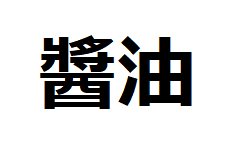
Firstly, 醤(sho).
Although, it’s complicated, you can find 酉 which also consists of the Kanji Sake (酒). This part means pot. As well as sake, shoyu has been made inside a pot.
Secondly, 油(yu).
It means oil. In this Kanji, you can find 氵which also consists of Kanji sake (酒). This part means liquid. As well as sake, shoyu is liquid.

2) Kana
There are two phonograms (kana) in Japanese: 1) Hiragana and 2) Katakana.
According to the most supported theory, both of them were formed by adopting one element of a Kanji character with similar sounding.
Originally, Hiragana were only for women. But today, it has by far the wider usage.
Talking of 2) Katakana, we use it mainly for foreign origin words.
Incidentally, there are 46 characters in both Hiragana and Katakana systems.
As for shoyu, Hiragana is しょうゆ and Katakana is ショウユ.
As you can see, yo (よ/ヨ) is smaller than other characters.
By writing it smaller, the pronunciation changes from shiyoyu to shoyu.
